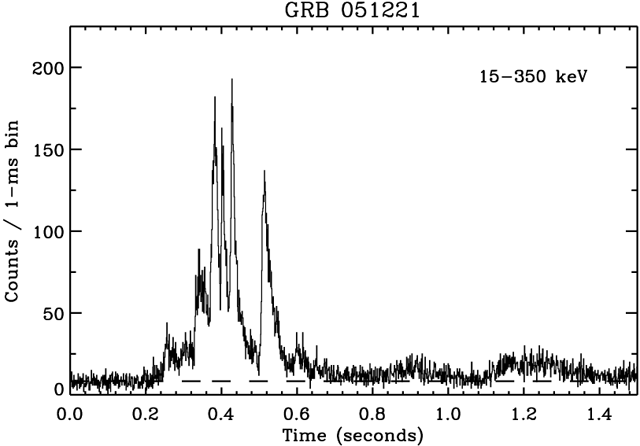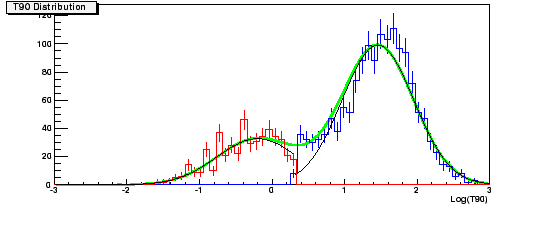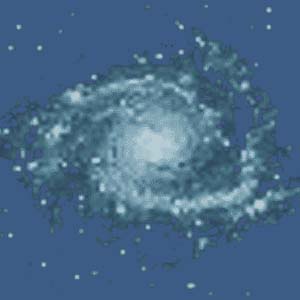|
Gamma Ray Bursts (GRBs) are temporary outbursts
of gamma rays observed on the sky. The photon energies are on the order of
hundreds of kiloelectronovolts. The bursts are detected by gamma-ray
satellites which are orbiting the Earth. Since many decades, astronomers
are fascinated by the GRB events and are formulating and testing
various hypotheses to explain the origin of GRBs.
 *
Observations of GRBs *
Observations of GRBs
The measured observables of GRBs are several characteristic values.
First of all it is the duration of the event.
This is ususally denoted as T90 [s] and measures the time
in which 90 per cent of the gamma photons have been captured by the detector.
A more accurate measurement of the event duration is hardly possible due to
the presence of background photons. Nevertheless, the T90 time
is quite good estaimate.
Apart from this, people are using also T50 measurement,
which is the time when half of the gamma rays reached the detector.
Another parameter is the fluence, F [erg/cm2].
This can be measured in various energy bands, and typically these bands are
20-50, 50-100, 100-300 and above 300 keV, while the total fluence
is the sum of all the components: Ftot = F20-50+F50-100+F100-300+F>300.
By calculating the ratio of fluxes measured in various energy bands, we can
describe the hardness of the burst, i.e. how large is the
input of hagh energy photons with respect to these of lower energies.
For instance the hardness
H32 = F100-300/F50-100 and
H321 = F100-300/(F20-50+F50-100).
The third important measurement is the photon flux at the maximum of the burst,
P [N/s/cm2], which has to be binned (integrated) over
some very small time bin, i.e.
64, 256 or 1024 milliseconds..
 *
Two classes of GRBs *
Two classes of GRBs
Gamma ray bursts have been classified in several groups.
The simplest classification is based on one variable, the burst duration.
The study of the sample of about two thousand GRBs showed that they
are clustering in two groups: short (T90 < 2 s) and long
(T90 >2 s. Moreover, the short bursts are characterized by
harder energy spectra.
However, the classification of GRBs based on their observed properties
should be consistent with their intrinsic, physical features.
For instance, the quantity measured by the detectors on the Earth orbit is
the energy flux near our planet, but the physical property of the GRB source is
its emitted flux. These two numbers can be matched if only we knew the
distance to the source, which is by no doubt cosmological (at least for many
bursts with redshifts measured for their host galaxies).
Therefore only after we overcome the observational bias, we may start
postulating models that aim to explain the origin of GRBs.
|

















